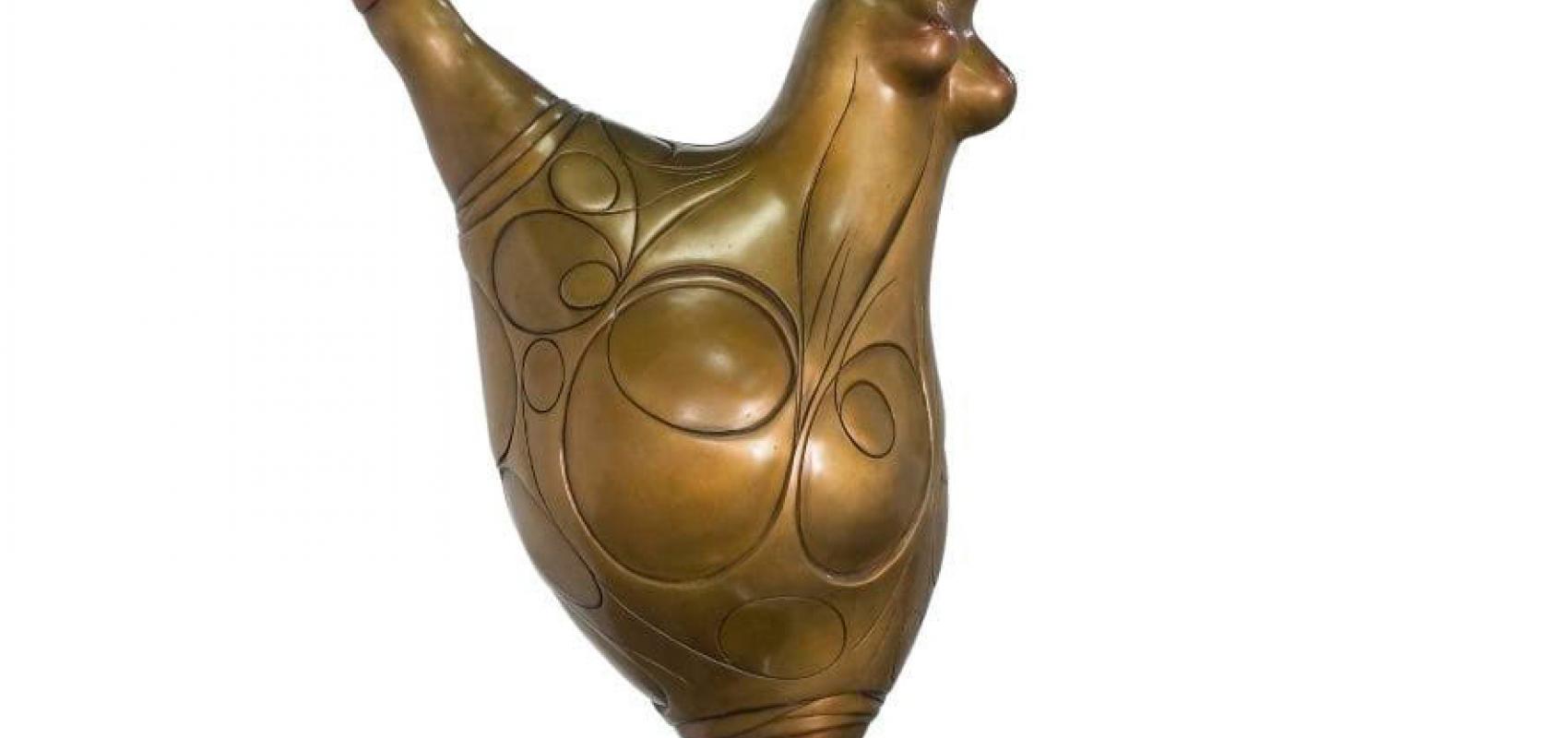Few artists would dare to create a sculpture and call it "Crying Bride", a title that makes too much of an impact, because no one would like to see a woman in her marriage immersed in tears, unless they were tears of happiness.
The master Pedro Pablo Oliva explains the motives of this sculpture, part of the catalog of Maxima Gallery: "It is a song to the loves that have been broken with migration, a cry of shores".
We know that the painter has reflected politics in his work, the crises and pains of the nation, as a strong foundation in his work, but always with an unwavering beauty.
Pedro Pablo Oliva, as a good exponent of poetry on canvas or in any format, knows how to create states of consciousness, without images or creations that are too rough or thorny.
In recent times, as we already know, he has devoted himself more to sculpture, a very complex type of work due to its high economic and creative demands. He is more than 70 years old and we are surprised by the subtlety with which he is able to look at the world. "You are a madman who never tires of opening windows and sowing stars", a fragment of the poem Con tantos palos que te dio la vida, by Fayad Jamís, which serves as a reference to think about Pedro Pablo.
Fortunately for the Maxima collection, we have new sculptures by the renowned painter, among other pieces.
1. The strange girl of the Chameleons and Girl in love with an Angel.
For many connoisseurs of his work, balance is a prevailing condition in Oliva and we speak of balance precisely because along with the feeling of peace, comes evasion, silence. His characters seem to doze in an apparent calm, in a scenario free of contradictions as a way to escape from reality, from the past or the present.
In both cases, La extraña muchacha de los Camaleones and Muchacha enamorada de un ángel, his geometry fascinates and unsettles. It is a stroke of splendor and subtlety to see the details of the pieces, the refinement, the degree of accuracy, transparency and imagination. The sublime in the artist is the most common sensation to witness.
Another pictorial fact in his work is the erotic in his visuality. An eroticism with the same balance to which we referred before. The right proportion in each erogenous zone, without altering the serenity of the piece (The strange girl of the Chameleons). In this specific case, the chameleon does not appear as a foreign body, but rather the author applies the holistic principle of the world: the whole contains the parts and vice versa.
The allegory of the reptile (chameleon) with the sensuality of the "strange girl" is evident. If we were to analyze it from another perspective, woman and nature, although its exponent is male on this occasion, represent an inseparable whole of fertility, of life, also very much in tune with the language and the panoramic passage of the sculpture.
2. Homage to a bride for David and Frightened of everything.
Both works belong to the series Sillones de Mimbre (Wicker Armchairs) and contain ingenious messages, a common practice in the artist's production.
The homage to the popular film A Bride for David is easy to interpret, because the sculpture's physiognomy testifies to its intention. The figure of a young woman with a bulge in her belly and entire body seems to burst with happiness before us. She does so calmly, sure of her truth, patient and without remorse.
With Espantado de todo, the symbolism is different. Marti lies asleep with his head bowed and the feeling of sadness is all too real. The Apostle of Cuban independence sleeps in a lethargy, which seems not to wake up, not to react. The procession is carried inside and the sorrows continue under the impenetrable silence.
At the same time, the work produces another sensation: such is its exquisiteness that it generates the desire to preserve it, to keep it, as long as the pain remains. The author of Versos Sencillos is too sacred to turn it into an outrage, a pantomime, a banality.
Thus we sigh with Pedro Pablo Oliva and thus he reveals to us part of his sleepless nights, of his hopes, he also shows us his greatness and meanwhile we, as mere mortals, contemplate his art because in one way or another, it is too forceful to overlook it.
Published 1/10/2021
More of the artist's works in the profile of Maxima gallery





